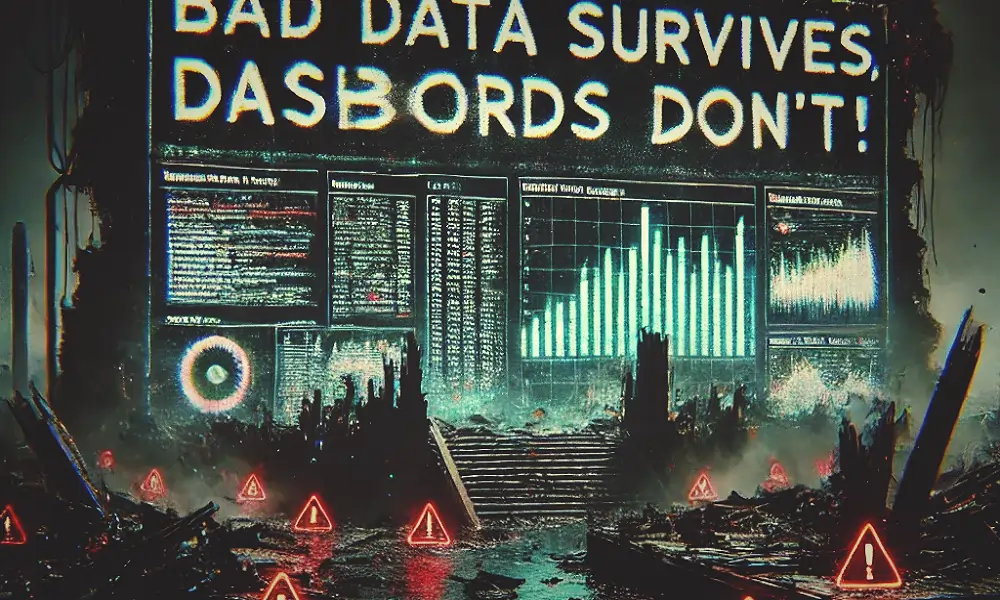I’ve been quiet on LinkedIn for a while, and it’s because we’ve been heads-down in UAT. Building a product is hard. Building a data-heavy product as a non-tech founder? Even harder.
When we started, we thought the problem was simple: HR teams struggle to act on their people's data. The assumption was that a better analytics tool or a more insightful data dashboard could solve this.
We were wrong.
Every conversation with HR colleagues pointed to the same issue—bad data was breaking everything. Analytics, dashboards, people analytics dashboard, workforce planning, AI models—none of it worked if the data wasn’t clean. Poor data visualization and bad dashboards only amplified confusion instead of creating clarity.
So we made a hard decision. We pivoted.
Talenode is now an HR-focused data quality and observability platform—a way to keep HR data clean, structured, and AI-ready, without manual effort. It’s like having a data quality dashboard and data observability dashboard working together to prevent bad data quality and bad data management from derailing insights.
Here are the biggest lessons we have taken on the journey:
1. The Product is Only as Good as the Data It Runs On
We assumed HR teams needed better insights. The real problem? Their data wasn’t reliable to begin with.
- HR teams spend over 40% of their time fixing data errors manually.
- Reports—attrition, headcount, workforce planning—are often off by double-digit percentages due to HRIS inconsistencies.
- AI and analytics projects don’t fail because the models are bad. They fail because the data isn’t AI-ready. The cost of bad data is invisible but massive, showing up in poor forecasting and flawed business decisions.
If your product relies on data, ask yourself if the data is even usable. If not, that’s the real problem to solve.
2. The "What" Matters More Than the "How"
Early on, I got stuck in tech questions:
- Should we go no-code or custom-build?
- Should we use AWS or GCP?
- Should we focus on integrations first or the UI?
Naturally technology scared me, so I was more concerned how to solve the unknown. None of that mattered until we knew exactly what we were solving.
HR teams don’t need yet another analytics tool. They need:
- One-click data cleaning – HR should only approve, not fix.
- Prebuilt HR rules – 100+ validations out of the box.
- Automated recommendations – Not just detecting errors but fixing them.
The tech stack follows the problem statement, not the other way around.
Our approach is built into how a good data dashboard or HR data dashboard should behave—less about features, more about dependable decisions.
3. UI/UX is More Than Just Design—It’s About Clicks & Actions
We assumed HR teams would be okay with complex workflows. They aren’t.
HR teams don’t have time for:
- 20-step filters to find a simple error
- Manually fixing data every month
- Learning a new system just to get clean data
So we changed our approach:
- Minimal clicks – Everything should be fixable in seconds
- Zero learning curve – If the HR team needs training, we’ve failed
- Automation-first – HR shouldn’t have to clean data manually
The goal? Move HR from "reviewing" data errors to simply "approving" fixes.
A good and bad data visualization mindset helped us understand how usability, data visualization dashboard clarity, and automation together shape adoption.
4. Jobs-to-Be-Done (JTBD) Beats Feature Lists
Instead of asking, “What features should we build?” we started asking:
- How can HR leaders ensure their attrition reports aren’t off by 15%?
- How can we make sure HR can approve all data corrections in under 60 seconds?
This shift completely changed our roadmap. We focused on automation, ease of use, and making corrections effortless instead of packing in unnecessary features.
That thinking also inspired how we think of data dashboard solutions—less about visual appeal and more about clarity, trust, and accuracy.
5. No Product Is Ever "Done" – Continuous Iteration is Key
Our first set of Figma mockups looked nothing like what we’re launching soon (more on this later!). We rebuilt multiple versions of:
- Data pipelines – Ensuring seamless integration with HRIS platforms.
- Business logic – Handling real-world HR exceptions (e.g., duplicate employee records across systems).
- Recommendation engine – Moving from just detecting errors to suggesting and applying fixes automatically.
If you’re building a product, expect to rebuild the core at least three to four times before getting it somewhat right.
Each iteration improved not just our data governance dashboard but also taught us the difference between bad data visualization and meaningful insight flow.
Final Thoughts: Build for the User, Not for Yourself
We’re still learning and improving Talenode every day. But one thing is clear:
- HR teams don’t need more bad dashboards. They need clean, usable data supported by intuitive data dashboard solutions that surface the truth, not noise.
- AI-powered HR only works if the underlying data is AI-ready.
- Manual data fixes are dead. Automation is the only way forward.
If you’re building a product, focus on the user, not the tech. Solve their problem, not yours.
Would love to hear from all of you - what’s the biggest product lesson you’ve learned? We would love to incorporate it into our JTBD roadmap.
I bring the thoughts, AI finds the words—together, we shape my voice. Proud to use AI as a tool, not a replacement!
Here’s a poem we created:
I write with AI, the thoughts are mine, Judge the intent, not the design.
Dashboards die, reports mislead, Bad Data Dashboard stays, truth concedes.
Fixing it all? That’s too tough, So kill the tool—good enough!
Talenode steps in—no more why, Clean data flows, no more lies.
No more guessing, no more pain, We break the cycle, end the chain!
